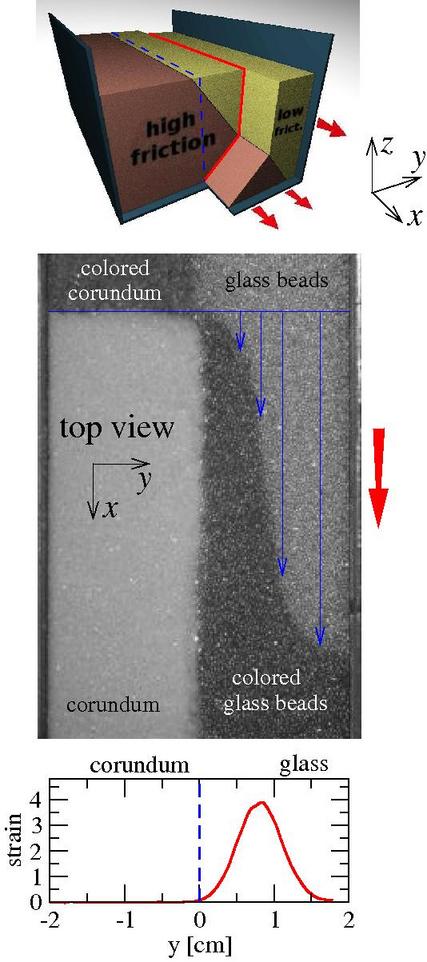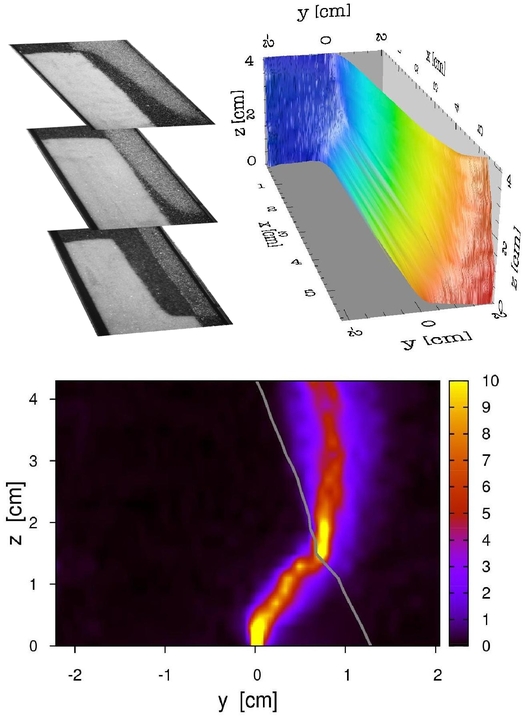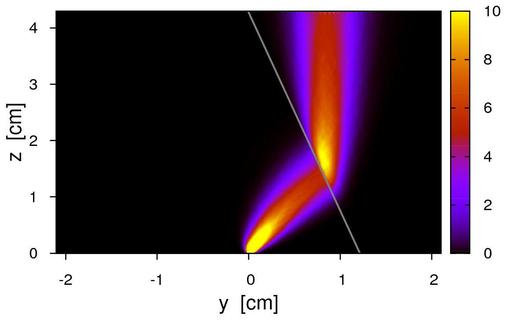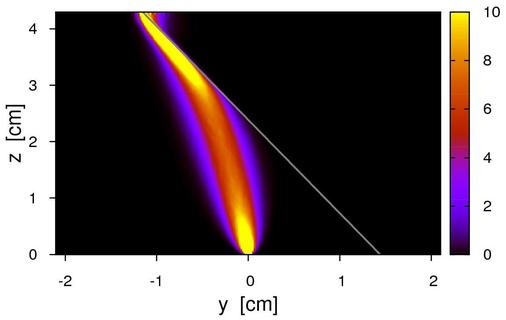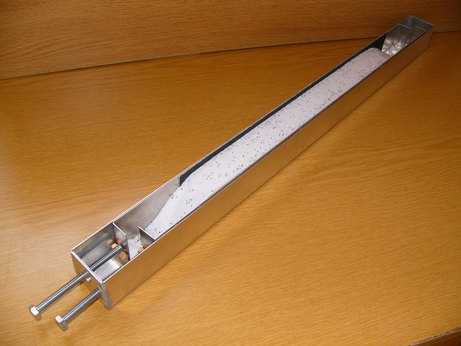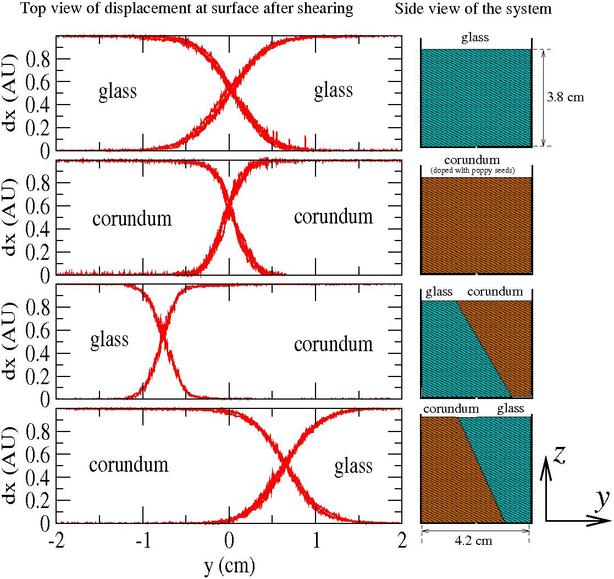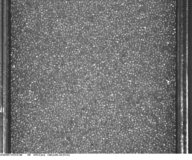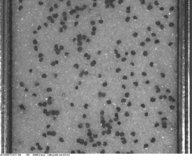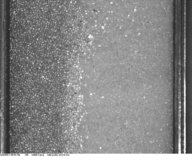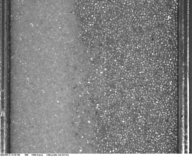|
|
Click on the image to see the movie taken during shearing. 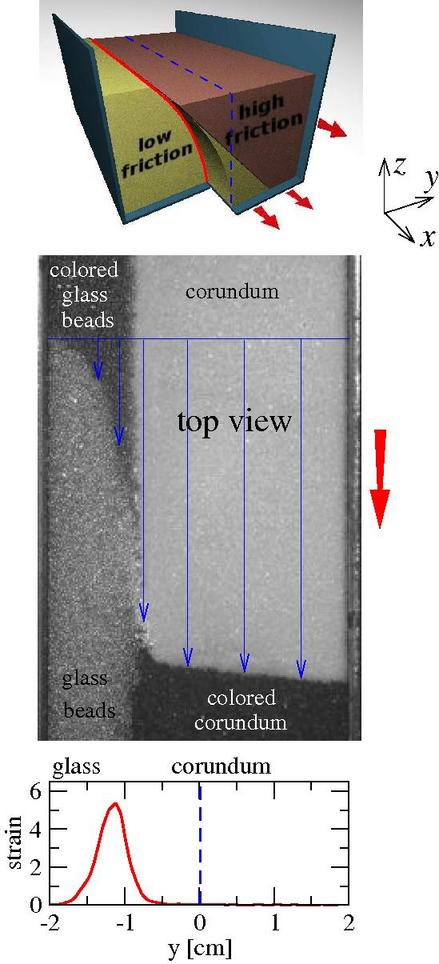 |
3D reconstruction
After
each experiment the displacement profile in the bulk d(y,z) was reconstructed by
removing the top surface of the material carefully layer by layer.
These profiles are presented in the images below for both
refraction and deflection, together with sample images taken during the
excavation process. The gradient of the displacement provides the local
shear strain inside the material in the y-z plane which is shown at the
plots below the displacement profiles. In the first case the zone,
starting from the bottom, takes a short path towards the
interface and by reaching the low friction region it changes direction
abruptly and heads straight to the top. In the second case the zone
starts in the low friction material it deflects to avoid the high
friction region even if it takes a much longer path. Further
measurements to explore the internal deformation using MRI are on the
way.
|
Click on the image below to see a movie of the subsequent layers from top to bottom during removing. 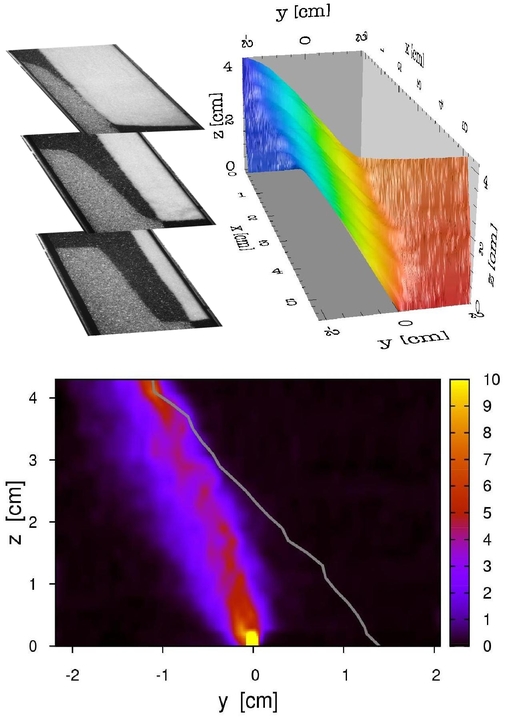 |
Numerical simulation results
The computer simulation is
performed based on the fluctuating narrow band model [Phys.
Rev. Lett., 92, 214301
(2004), Phys.
Rev. E 75, 011305 (2007)].
According to this model the deformation occurs along the weakest
sliding surface through the random medium. An ensemble average over the
random realizations of the granular medium provides the shape and width
of the shear zone. A cross section of the numerical system
is shown below
for two simulations corresponding to the two experimental systems.
(click on the images to
magnify)
|
|
|
Verifying Snell's law
Numerous experiments and
simulations have been performed to test whether Snell's law is valid
for this system. As described above it is expected that the relative
index of refraction is replaced by the ratio of the
effective frictions. We estimated the ratio of the effective frictions
by measuting the angle of repose for both materials and the
experimentally obtained value was 1.63. We compare this number with the
raio of the sines of the angles of incidence (see inset of graph b
below). The ageement is very good for both experiments and simulations.
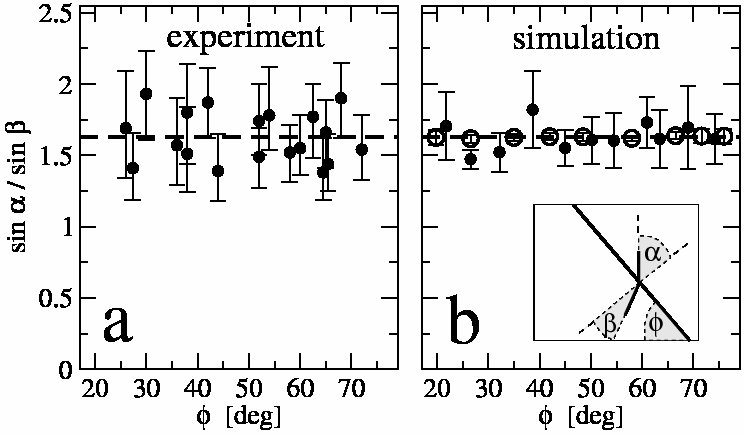
Experimental details
Further experimental results
